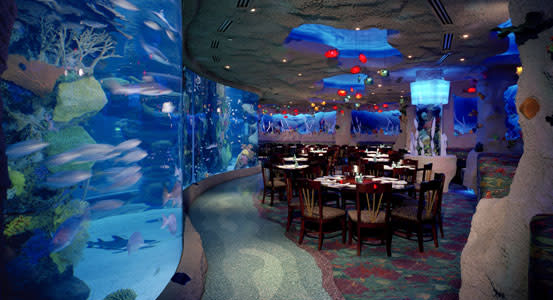One of my former SCORE colleagues, Tuck Aikin, wrote the following article about the value of keeping an eye on changing business conditions several decades ago. Some of the data contained in the original article have become stale with time, but the message remains as true today as it was when Tuck penned them. To ensure the message continues to resonate with readers today, I took the liberty to add an update to one of his story points but kept the intended message intact.
“Timing has a lot to do with the success of a rain dance…” – “and location,” one might add to this bit of folk humor. The amusing element of this tongue-in-cheek wisdom is, of course, the fact that everyone knows a rain dance doesn’t really bring rain. But, if you time it right and do it in the right location, it certainly looks like there’s a cause-and-effect relationship.
Now consider the commonly accepted notion that businesses can create a market for a product or service through persistent and imaginative advertising and promotion. If customers swamp the provider with purchases, it sure looks like the business created the demand, but did it really, or was it just a matter of timing and position?
Smart business operators eschew the idea that they can create a market and focus instead on the timing and positioning of their product or service. Consequently, they direct all their marketing and promotional efforts toward the market they know or suspect already exists. It’s a matter of effectively stimulating an existing demand or need they reason. This approach requires an understanding of the essential nature of “markets,” without which any enterprise is likely doomed to failure.
So, what are markets, and how do they behave? At their most basic, they are vaporware, to use current computer jargon. That is, they’re like smoke, they arise and disappear whimsically, sometimes for known reasons and sometimes for no apparent reason at all. They also expand and contract and realign and reposition themselves within larger markets. Yet strangely enough, at any point in time, they also possess the characteristic of having quite sharply defined edges and, therefore, sizes.
I, for instance, am clearly outside the border of the market for rap ‘music,’ and no amount of promotion will ever bring me inside the fold, despite the fact that generally, I like all kinds of music. There’s no explanation for it, and that’s the enigma. So, to be successful, businesses have to constantly keep their feelers out for market changes, respond accordingly, and at the same time keep their operation appropriately aligned with the size of the market. This last point is key, and if not fully appreciated virtually always leads to failure. The recent closing of Denver’s Ocean Journey Aquarium is a good example.

As reported in the press, the aquarium was extremely popular, “…the fourth most-attended cultural institution in the Denver area…” according to its CEO Doug Townsend. Yet it failed. Why? Before it was built, feasibility studies (that is, research to determine the size of the existing market) projected sufficient annual revenues to justify spending $93 million on the project. As it turns out, the research was wrong, and despite the fact that it attracted 2.8 million paying customers since opening, it needed $10 million more in revenue in 2001 to stay afloat. The critical mistake – its cost exceeded the size of the market for such a facility in the Rocky Mountain region, so it sank. This is probably the main reason that bigger is not always better.
EDITORIAL NOTE: Although the aquarium was highly successful and the attendance was high for years, Mayor Wellington Webb chose to invest over 100 million building a new competitive Aquarium at the Denver Zoo and fought Ocean Journey at every turn. Denver did not need two aquariums, so funding and attendance suffered at both. And after the 9/11 tragedy in 2001, the number of visitors fell drastically within a few months, and the aquarium failed to meet its attendance projections of over a million visitors per year, in part because of a downturn in the U.S. economy. The aquarium was not able to make payments on its high construction debt, and Colorado Ocean Journey Liquidation Inc. filed bankruptcy in April 2002 with a $62.5 million debt. After a last-minute bidding war with Ripley’s Entertainment, Landry’s Restaurants, Inc. purchased the facility in March 2003 for $13.6 million. Renovations were undertaken that included the addition of a full-service restaurant, bar, and ballroom, and a 150,000-US-gallon marine aquarium was added to the restaurant area and renamed the Downtown Aquarium.
Aggressive expansion, or at least growth driven beyond the demonstrated market, will almost always doom the enterprise. And yes, not-for-profit ventures have limited markets too that, if exceeded, will not financially support the organization’s efforts, regardless of heartfelt entreaties for help. Unfortunately, assessing market size is a daunting challenge because its ethereal nature doesn’t allow direct measurement. The best that can be done, then, is to focus on previous sales experience, especially over time.
So small business should keep its ear to the ground and their eyes on the market sky if it wants to avoid a fatal drought.
Tuck Aikin was a former SCORE colleague of mine for many years until his retirement. Tuck is a prolific writer and wrote small business-themed articles for the Colorado Springs Gazette for many years. As a co-mentor, Tuck was my inspiration for me starting this blog. The preceding post is reproduced with permission from the author.












